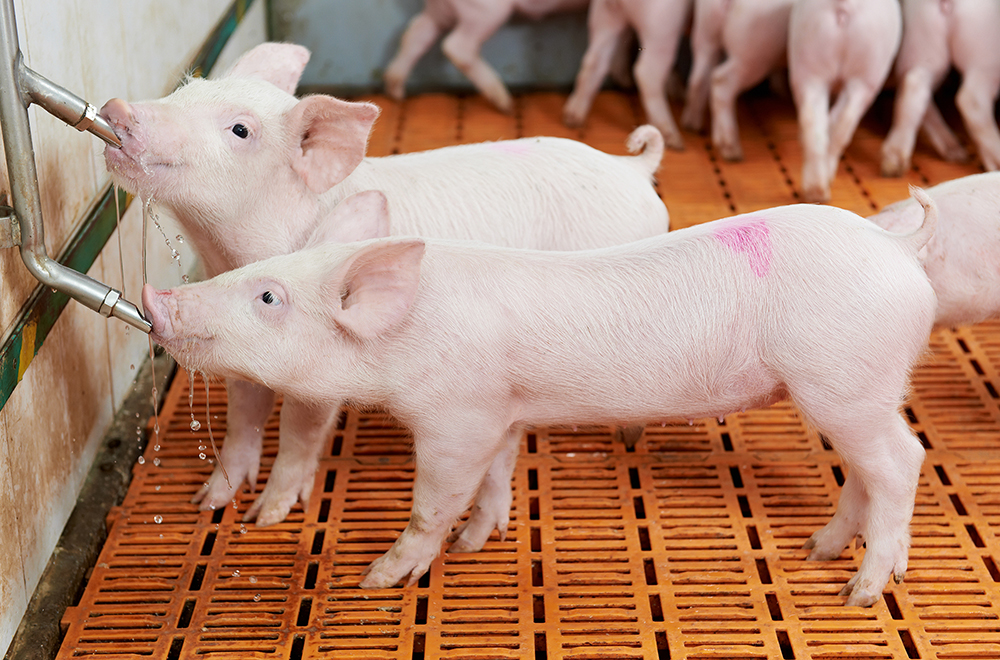Animal welfare can now be considered alongside other impacts of farming to identify the most effective farming systems thanks to advances at Cambridge University. Scientists have created an animal welfare measuring system allowing for reliable comparisons to be made.
With animal welfare high on the agenda, and at a time of rising demand for meat products, the assessments could allow consumers to be better informed when choosing products at the point of purchase.
There are several labelling schemes in place which indicate the standards met along the supply chain. The team of researchers used their new system to test how different labels compare in terms of animal welfare. Findings showed that farms producing ‘woodland’ labelled pork products scored best for pig welfare, followed by ‘organic’, then free-range, RSPCA assured and Red Tractor. Those with no certification were ranked in last place.
Dr Harriet Bartlett, author of the study who carried out the work whilst a researcher at the University’s Department of Veterinary Medicine, said: “We have shown that it’s possible to reliably assess animal welfare on farms. This means decisions about which types of farm are better or worse for animal welfare can be based on proper calculations, rather than assumptions – as is currently the case.
“Now animal welfare can be included in overall assessments of farm sustainability alongside other measures like carbon emissions and biodiversity impacts, so we can make better informed decisions about how we choose to farm and what we choose to eat.”
Wide ranging set of measurements
It has previously been challenging to decipher an overall measurement of animal welfare due to the differing opinions on the levels of importance of different factors. The new system assesses the quality of an animal’s life through a wide-ranging set of welfare measurements, reflecting a range of concerns. The results can be combined into a single score to enable comparison across farms.
Assessment of the pigs examined everything from health problems to behaviours and various scoring methods were tested – giving more or less weight to the different aspects of animal welfare – on 74 pig farming systems in the UK.
Professor Andrew Balmford from the University of Cambridge’s Department of Zoology, said: “Despite ongoing debate about how to measure animal welfare, we found we can identify which types of farms we might want to encourage and which we shouldn’t with reasonable consistency.”
Professor James Wood at the University of Cambridge’s Department of Veterinary Medicine, said: “This work opens up possibilities for greater rolling our of welfare assessment scores in food labelling, including in other species as well as pigs. Until now, the methods available have made this impractical.”
‘Life Cycle Assessment’
The technique of ‘Life Cycle Assessment’ is widely used to measure environmental impacts, such as greenhouse gas emissions and land use, across all stages of farm animal production. Until now, a method of measuring welfare has been missing from the system, so Life Cycle Assessments do not include it and, as a result, welfare concerns have sometimes been overlooked.
Making farming more sustainable whilst facing a growing demand for meat products is a challenge for farmers and governments globally.
‘Woodland’ labelled pork is from farms that provide at least partial tree cover for the pigs, and ‘Organic’ provides outdoor access for them. The ‘RSPCA assured’ label is welfare-focused, while ‘Free-range’ is not a formal assurance, but typically refers to fully outdoor farming systems. Most UK pig farmers produce ‘Red Tractor’ labelled pork, which has lower production costs which, in tern, means lower prices for consumers.




